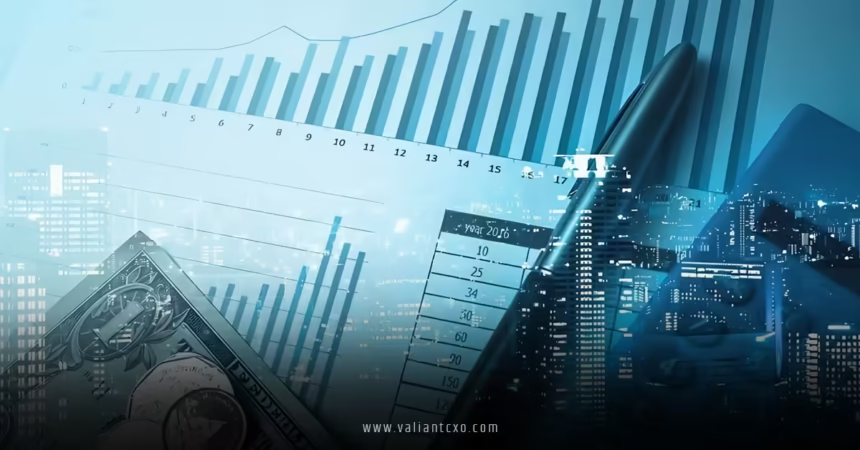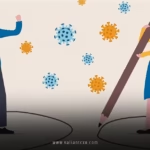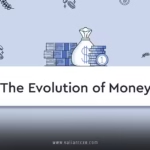The Hidden Drivers of Economic Change are all around us, quietly shaping the way we live, work, and prosper. Ever wonder why some economies boom while others stagnate? Or why a single innovation can flip entire industries upside down? These questions point to forces that often go unnoticed—yet they wield immense power over global markets, local businesses, and even your wallet. In this article, we’ll dive deep into The Hidden Drivers of Economic Change, peeling back the layers to reveal what’s really steering the economic ship. From technological breakthroughs to cultural shifts, let’s explore the unseen currents that make the world’s economies tick.
What Are The Hidden Drivers of Economic Change?
At its core, The Hidden Drivers of Economic Change refer to the subtle, often overlooked forces that influence economic systems. Think of them like the wind pushing a sailboat—you might not see the gusts, but they’re what move the ship forward. These drivers aren’t always flashy headlines about stock market crashes or new government policies. Instead, they’re the slow burns, the gradual shifts that reshape industries and societies over time. They include things like technological advancements, demographic changes, cultural attitudes, and even environmental pressures. Understanding these forces is like getting a backstage pass to the global economy.
Why Do These Drivers Matter?
Why should you care about The Hidden Drivers of Economic Change? Because they affect everything from the price of your morning coffee to the job market you’re navigating. These forces determine which industries thrive, which ones fade, and how wealth is distributed. For instance, the rise of smartphones didn’t just make tech companies richer—it changed how we shop, communicate, and even date! By grasping these drivers, you can better predict trends, make smarter financial decisions, and maybe even spot the next big opportunity.
Technological Innovation: The Engine of Economic Transformation
One of the most powerful Hidden Drivers of Economic Change is technology. It’s the spark that ignites progress, for better or worse. From the steam engine to artificial intelligence, technological leaps have always redefined how economies function.
The Rise of Automation and AI
Automation and artificial intelligence (AI) are reshaping industries faster than you can say “robot takeover.” Factories that once needed hundreds of workers now hum along with machines that never sleep. AI is crunching data to optimize everything from supply chains to marketing campaigns. According to a report by McKinsey, automation could boost global GDP by up to 1.4% annually. But here’s the flip side: it’s also displacing jobs. The Hidden Drivers of Economic Change like AI force us to adapt—workers need new skills, and businesses need to rethink their models. Are we ready for a world where machines do most of the heavy lifting?
The Digital Revolution’s Ripple Effect
The internet itself was a game-changer, but its ongoing evolution continues to be one of The Hidden Drivers of Economic Change. E-commerce platforms like Amazon have turned traditional retail on its head. Meanwhile, blockchain technology is quietly revolutionizing finance, from cryptocurrencies to secure supply chain tracking. These digital shifts create winners and losers—think of the local bookstore versus the online giant. The question is, how can businesses and individuals ride these waves instead of getting swept away?
Demographic Shifts: The Power of People
People are the heartbeat of any economy, and changes in population dynamics are among The Hidden Drivers of Economic Change. Aging populations, migration patterns, and shifting birth rates all play a role in shaping economic landscapes.
Aging Populations and Economic Strain
In countries like Japan and Germany, aging populations are putting pressure on economies. Fewer young workers mean smaller tax bases and higher costs for healthcare and pensions. The World Bank estimates that by 2050, one in six people globally will be over 65. This shift forces governments to rethink policies and businesses to adapt to a workforce that’s shrinking or retiring later. Ever thought about how an aging society might change the products you buy or the services you use?
Migration and Economic Growth
Migration is another hidden driver that can supercharge or destabilize economies. When people move, they bring skills, ideas, and energy. Look at Silicon Valley—its tech boom owes much to immigrants who fueled innovation. But migration can also strain public resources or spark cultural tensions, which ripple into economic effects. The Hidden Drivers of Economic Change like migration remind us that people aren’t just numbers—they’re catalysts for growth or disruption.
Cultural Shifts: The Invisible Hand of Values
Culture might seem soft, but it’s a hard-hitting force among The Hidden Drivers of Economic Change. What we value as a society shapes what we buy, how we work, and where economies head next.
The Rise of Sustainability
Ever notice how everyone’s suddenly obsessed with eco-friendly products? That’s not just a trend—it’s one of The Hidden Drivers of Economic Change. Consumers are demanding sustainable practices, pushing companies to rethink supply chains and packaging. The International Energy Agency reports that investments in renewable energy hit $1.8 trillion in 2023. Businesses that ignore this shift risk losing customers, while those that adapt can tap into a growing market. Are you buying into the green revolution, or is it just a passing fad?
The Gig Economy and Changing Work Attitudes
The way we view work is another cultural driver. The gig economy—think Uber drivers or freelance coders—has exploded because people crave flexibility. This shift is one of The Hidden Drivers of Economic Change, as it redefines labor markets and challenges traditional employment models. Companies now compete for talent in a world where “job security” isn’t the holy grail it once was. How’s that for a plot twist in the story of work?
Environmental Pressures: Nature’s Economic Influence
Mother Nature doesn’t mess around, and her impact is one of The Hidden Drivers of Economic Change that we can’t ignore. Climate change, resource scarcity, and natural disasters are forcing economies to adapt in big ways.
Climate Change and Economic Costs
Rising temperatures and extreme weather are more than environmental issues—they’re economic ones. Droughts disrupt agriculture, hurricanes damage infrastructure, and rising sea levels threaten coastal cities. The cost of climate-related disasters is staggering, with estimates suggesting trillions in damages by 2050. Businesses are pivoting to “green” strategies, not just for ethics but for survival. The Hidden Drivers of Economic Change like climate force us to ask: how much are we willing to pay to protect our planet?
Resource Scarcity and Innovation
When resources like water or rare minerals get scarce, economies feel the pinch. But scarcity also breeds innovation. Think of how high oil prices in the 1970s sparked interest in renewable energy. Today, companies are finding ways to do more with less, from recycling materials to developing lab-grown meat. These responses to scarcity are among The Hidden Drivers of Economic Change, proving that necessity really is the mother of invention.
Globalization: The World as One Big Market
Globalization ties economies together like never before, making it one of The Hidden Drivers of Economic Change. Trade, outsourcing, and global supply chains have created a world where a factory shutdown in Asia can spike prices in North America.
Supply Chain Vulnerabilities
The COVID-19 pandemic exposed how fragile global supply chains can be. A single disruption—like a port closure—can ripple across continents, delaying everything from car parts to toilet paper. This vulnerability is one of The Hidden Drivers of Economic Change, pushing companies to diversify suppliers or bring production closer to home. Ever wonder why “made in USA” is making a comeback?
The Rise of Emerging Markets
Emerging economies like India and Nigeria are reshaping the global landscape. Their growing middle classes are boosting demand for everything from smartphones to luxury goods. As these markets rise, they’re among The Hidden Drivers of Economic Change, shifting economic power away from traditional Western hubs. It’s like the global economy is rewriting its cast of main characters—who’s next in the spotlight?
Policy and Regulation: The Rules of the Game
Governments might not seem “hidden,” but their policies often work behind the scenes as The Hidden Drivers of Economic Change. Tax laws, trade agreements, and regulations can make or break industries.
Monetary Policy and Interest Rates
Central banks like the Federal Reserve wield enormous power by tweaking interest rates. Low rates can spark borrowing and growth, while high rates can cool things down. These decisions ripple through housing markets, small businesses, and even your savings account. The Hidden Drivers of Economic Change like monetary policy remind us that a few people in a boardroom can sway entire economies.
Trade Policies and Tariffs
Trade wars and tariffs can redirect the flow of goods and money. For example, tariffs on Chinese goods under the Trump administration forced companies to rethink supply chains. These policy shifts are among The Hidden Drivers of Economic Change, proving that politics and economics are two sides of the same coin. Ever thought about how a tariff might affect the price of your next phone?
Conclusion: Embracing The Hidden Drivers of Economic Change
The Hidden Drivers of Economic Change are like the currents beneath the ocean’s surface—powerful, often invisible, but always shaping the direction of the tide. From technology and demographics to culture, environment, globalization, and policy, these forces work together to mold our economic reality. By understanding them, we can better navigate the challenges and seize the opportunities they create. So, next time you hear about a new trend or feel a shift in the economy, ask yourself: what’s driving this change? The answer might just give you a head start in this ever-evolving world.
FAQs About The Hidden Drivers of Economic Change
1. What exactly are The Hidden Drivers of Economic Change?
The Hidden Drivers of Economic Change are subtle forces like technology, demographics, culture, environment, globalization, and policy that shape economies over time. They’re often overlooked but have massive impacts on markets and societies.
2. How does technology act as one of The Hidden Drivers of Economic Change?
Technology, like AI or the internet, transforms industries by improving efficiency, creating new markets, and sometimes displacing workers. It’s a key force driving innovation and economic shifts.
3. Why are demographic changes considered part of The Hidden Drivers of Economic Change?
Shifts like aging populations or migration affect labor markets, consumer demand, and public spending, quietly reshaping economies in ways that aren’t always obvious at first glance.
4. Can cultural shifts really influence The Hidden Drivers of Economic Change?
Absolutely! Changing values, like the push for sustainability or flexible work, drive consumer behavior and business practices, making them powerful economic forces.
5. How can I stay ahead of The Hidden Drivers of Economic Change?
Stay curious! Keep an eye on trends in tech, culture, and policy. Educate yourself, adapt to new tools, and think critically about how these forces might shape your industry or finances.
Read More:valiantcxo.com


